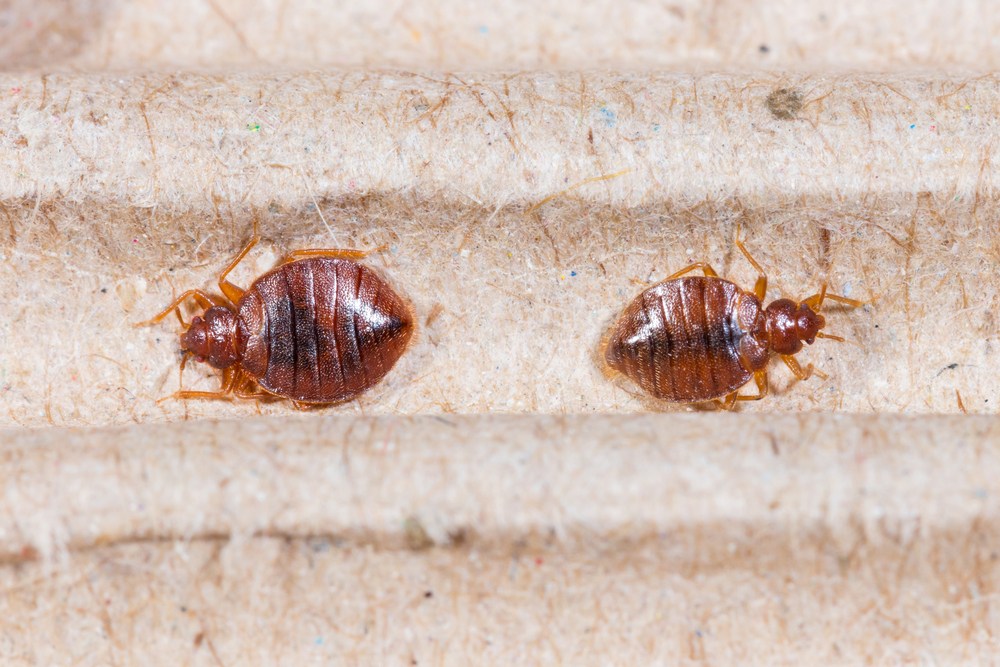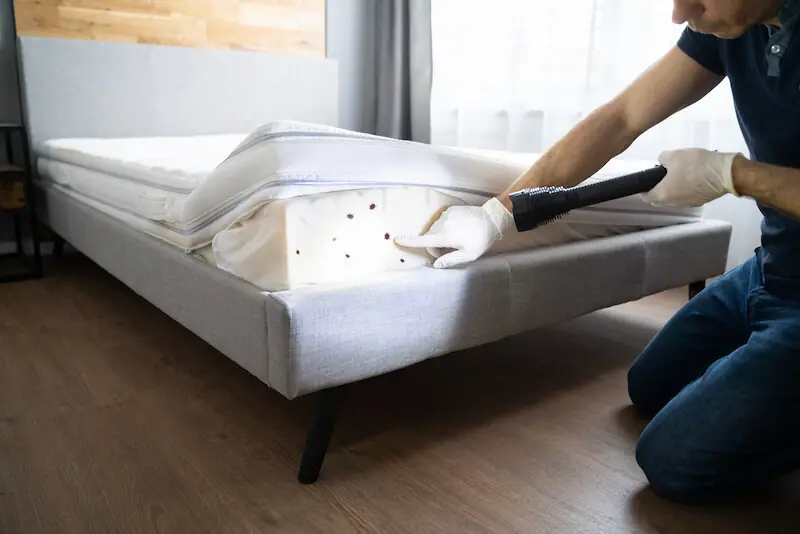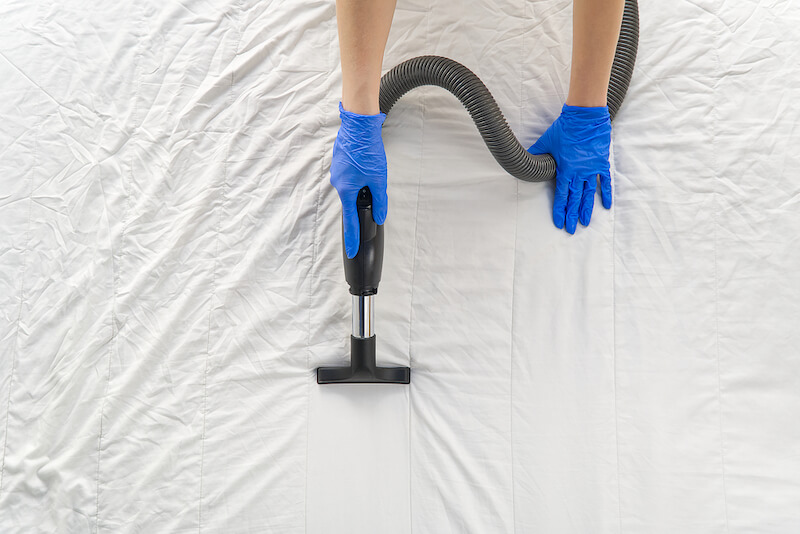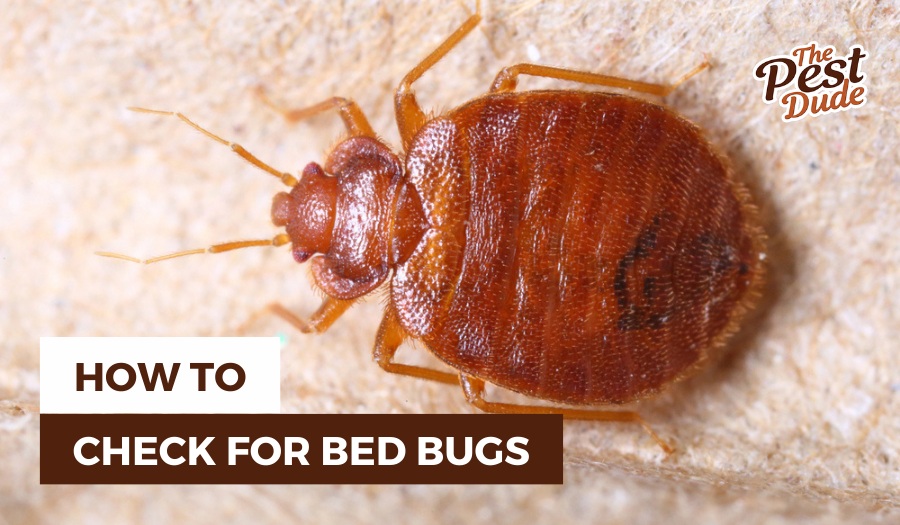Have you noticed itchy, red welts on your skin when you wake up? Maybe you’re seeing blood spots on your sheets in the morning?
If so, you could have a bed bug problem.
Bed bugs are tiny pests that can be difficult to identify and get rid of, so you have to act fast if you suspect an infestation.
In this blog, we’ve compiled our extensive pest management knowledge to help you learn to spot and eradicate bed bugs in your space.
Key Takeaways
- To check for bed bugs in your space, gather your tools, inspect your bedding, check your bed frame and headboard, inspect your furniture and living spaces, and thoroughly check your closet and clothing.
- If you find bed bugs, isolate the affected item, clean and declutter your space, heat treat fabrics, and call a pest management professional for more assistance.
- Bed bugs can be tricky to get rid of on your own, so we highly recommend enlisting the help of a professional exterminator – call us to connect with a pro in your area: (844) 532-0076.
Before You Get Started
- Wear Protective Clothing: Before you go looking for these tiny pests, put on a long-sleeved shirt, long pants, and gloves.
- Contain Your Tools: Keep all inspection tools, like flashlights and magnifying glasses, in a sealed plastic bag when not in use to stop bed bugs from hitching a ride.
- Seal Infested Items: If you find infested items, seal them in plastic bags immediately to contain and prevent the spread of bed bugs.
- Shower and Change Clothes: After the inspection, shower and change into clean clothes. Wash your inspection outfit in hot water and dry on high to kill any bed bugs that may have hitched a ride.
Signs of Bed Bug Infestations

Think you might have bed bugs?
Look for these signs:
Fecal Spots
Fecal stains look like tiny, dark spots that are about the size of pinheads.
In most cases, you’ll notice them on mattresses (especially in mattress seams), sheets, and boxsprings.
Red/Rusty Stains
Finding red or rusty stains on your bedding can be alarming and often means bed bugs.
These stains usually happen when bed bugs are crushed while feeding on a sleeping person. The red marks are remnants of blood from the bugs’ bodies.
Live Bed Bugs
One sign of an active infestation is sightings of live bed bugs.
These are small, reddish-brown critters that are the size of an apple seed or smaller.
They usually hide in cracks and crevices and can be tricky to spot – unless you know where to look.
Shed Skins
Bed bugs shed their skins five times before reaching maturity.
If they’ve been living and feeding in an area, you’ll likely notice the empty exoskeletons they leave behind.
Eggs
Bed bug eggs are white and about 1mm long.
Look for clusters of these tiny, oval eggs and their shells in hidden areas.
Musty Odor
Severe bed bug infestations can create a strong, musty smell.
Bed Bug Bites
Bed bug bites look like red, itchy welts.
They often appear in a line or cluster on exposed skin like the arms, legs, neck, or face.
How to Check for Bed Bugs in Your Home

1. Gather Your Tools
Before you go looking for these troublesome critters, grab a few tools.
What you need:
- Flashlight
- Magnifying glass
- Sticky tape
- Credit card
- Magnifying glass
These tools may seem simple, but they’ll go a long way toward helping you identify active bed bug infections and target subsequent treatment.
2. Inspect Your Bedding
Bed bugs don’t like to travel far for a meal. In fact, they usually live within eight feet of their primary food source.
Because of this, you’re most likely to find them in your mattress and bedding.
Here’s how to check this space:
- Remove all bedding: Take off sheets, pillowcases, mattress protectors, and comforters. Place them in sealed plastic bags until you can wash them.
- Inspect the mattress: Look for live bed bugs, their shed skins, or eggs. Pay special attention to any tufts or folds and the stitching of the mattress.
- Examine seams and labels: Shine the flashlight in dark corners and crevices where bed bugs might hide. Look for signs like blood stains and eggs. Closely inspect the seams, tags, and piping along the edges of your mattress and box spring. If you want to be really thorough, run a credit card along the seams of your mattress. This can help to dislodge bed bugs and reveal their hiding spots. Pay close attention to any folds or tufts in the fabric.
Pro Tip: Bed bugs are active at night, so check your mattress and bedding in low light or with a red light to detect them more easily.
3. Check The Bed Frame and Headboard
Bedbugs often hide in bed frames and headboards.
Here’s how to check these areas:
- Examine crevices and joints: Use a flashlight to inspect the seams, crevices, and joints of your bed frame and headboard. Look for reddish-brown stains, dark spots, or shed skins.
- Use a magnifying glass: If possible, use a magnifying glass to closely inspect hiding and harborage areas.
- Inspect during low light: Remember that bed bugs are nocturnal, so inspect your bed frame and headboard in low light or with a red light to spot them more easily.
- Be thorough: Inspect all parts of the bed frame and headboard, including the back and underside. It may be a pain now, but it’ll pay off in the long run.
4. Inspect Your Furniture and Living Areas
Bed bugs don’t limit themselves to beds! They’re also happy to hide out in your sofa, where they can have a nice meal while you watch your favorite shows.
Follow these tips to inspect furniture:
- Check seams and folds: Inspect the seams, folds, and tufts of mattresses and upholstered furniture. Bed bugs often hide here.
- Use a flashlight: Shine a flashlight into dark corners, under cushions, and inside furniture crevices to spot signs of bed bugs.
- Check behind picture frames and wall hangings: Bed bugs can also hide behind picture frames, mirrors, and other wall hangings. Be sure to check all of these places around your upholstered furniture.
- Check baseboards and carpets: Pay attention to the edges of baseboards and trim pieces, especially where carpet meets the wall. Bed bugs can hide behind baseboards or in the fibers of carpets.
- Inspect electric outlets and switch plates: Carefully remove and inspect behind electrical outlet covers and switch plates, as bed bugs can hide in these spots.
5. Inspect Your Clothing
Bed bugs can hitchhike into your clothing after travel, or if you’ve recently brought home a piece of vintage or used clothing.
Here’s how to spot them:
- Examine clothing seams and folds: Bed bugs often hide in the seams, folds, and pockets of clothing. Pay close attention to these areas, as well as the hangers and racks that house your clothes, and look for any signs of bed bugs or their excrement.
- Check closet corners and floorboards: Bed bugs may be hiding in the corners and along the floorboards of closets. Use a flashlight to inspect these dark areas.
- Use a lint roller: Roll a lint roller over the surface of your clothes and fabric items. This can help pick up any bed bugs or their eggs.
What to Do If You Find Bed Bugs

So you found bed bugs in your space.
Now what?
Keep calm and follow these tips:
1. Isolate the Affected Item
Once you confirm the presence of bed bugs, isolate the affected items to keep them from spreading.
Keep all infested items, like bedding and clothing, in plastic bags until you can treat your space.
2. Thoroughly Clean and Declutter
Vacuum carpets, furniture, and mattress seams in the affected areas.
Use a vacuum with a HEPA filter to contain bed bugs, shed skins, and eggs.
Declutter your home to reduce hiding spots for bed bugs and make treatments more effective.
3. Wash and Heat-Treat Fabrics
Wash all infested fabrics, including linens, curtains, and clothes, in hot water and dry them on the highest heat setting.
4. Contact a Pest Professional
Most importantly, contact a pest control expert right away.
Since bed bugs can be so tough to get rid of, you truly need the knowledge and skill of a professional to make it happen.
Want a complete guide on how to get rid of bed bugs in your space? Check out our blog.
Stop Sharing Your Space With Bed Bugs – Get the Help of a Pest Pro Today!
Nobody wants to go to sleep knowing that creepy, biting bed bugs are lurking in their mattress or sheets.
Fortunately, you can put a stop to your bed bug infestation – you may just need a bit of extra help.
If your DIY efforts have failed or you want faster results, get in touch with a pest management professional in your area.
Contact us today at (844) 532-0076, and we’ll help you find the right local team for you.

Get a Free Quote
Give us a call today to receive your free, no-obligation pest control quote.
FAQs
Bed bugs are small, reddish-brown insects that feed on the blood of people and animals.
They’re nocturnal pests that live in the same places they feed, which means they’re commonly found in bedding, mattresses, furniture, and cracks or crevices close to sleeping areas.
While bed bugs may be tiny, they’re also a super persistent pest. Because they’re so small, bed bugs can hide virtually anywhere, making them tough to spot and eradicate.
Even worse, bed bugs are adept hitchhikers, and they can spread via luggage, clothing, used furniture, and textiles.
While bed bugs are not known to transmit diseases, their bites can cause itchy welts and allergic reactions, so it’s important to identify and treat infestations as soon as possible.
Additionally, the psychological effects of a bed bug infestation can be severe – knowing these critters are hanging out in your bed can cause stress, anxiety, and insomnia.
Here are some simple strategies to keep these pests away:
- Inspect Used Furniture: Check for signs of bed bugs, like dark spots or shed skins, before bringing any second-hand furniture into your home.
- Use Mattress Covers: Encase your mattresses and box springs in covers designed to prevent bed bugs.
- Reduce Clutter: Keeping a clean and organized home reduces hiding spots for bed bugs.
- Vacuum Regularly: Vacuum floors, carpets, and furniture frequently. Dispose of the contents of the vacuum in a sealed plastic bag after each use.
- Be Careful with Shared Laundry: Use plastic bags to transport laundry and avoid placing it on shared surfaces.
- Seal Cracks: Close up cracks and gaps in walls, floors, and furniture to prevent bed bugs from entering.
- Stay Alert When Traveling: Check hotel bedding and furniture for bed bugs and keep your luggage off the floor and bed.





This guide on checking for bed bugs in your home is invaluable! Clear, practical steps help ensure early detection and prompt action, crucial for maintaining a pest-free living space. Highly recommended!